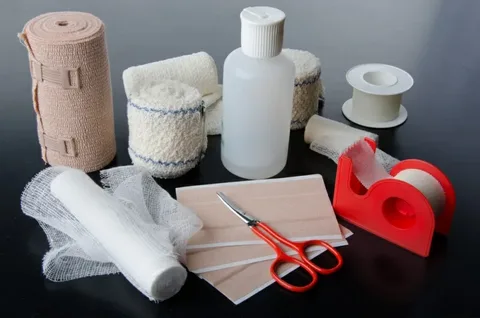
When it comes to treating cuts, scrapes, or more serious injuries, having the right supplies in your first aid kit can make all the difference. Best wound care products are essential for promoting healing, preventing infection, and minimizing scarring. Whether you’re at home, at work, or on the go, a well-stocked first aid kit ensures you’re prepared for unexpected accidents. These products are specifically designed to help clean, protect, and heal wounds effectively, making sure you can manage injuries without complications. In this post, we’ll highlight the top five products every first aid kit should have.
Along with the best wound care products, addressing recovery aspects like Cold Compression Therapy is crucial. Swelling is a natural response to injury and can slow healing. Using cold compression therapy can reduce inflammation and improve circulation, speeding up recovery. Incorporating this therapy helps manage both the injury and swelling, ensuring a smoother and quicker healing process..
1. Antiseptic Solution or Wipes
The first step in wound care is cleaning the affected area to prevent infection. Antiseptic solutions or wipes are essential for disinfecting wounds. Look for products that contain ingredients like iodine or alcohol, which are proven to kill bacteria and cleanse the area. Having antiseptic wipes or solutions in your first aid kit is vital to ensure that dirt and bacteria are removed from the wound before further treatment, reducing the risk of infection.
2. Sterile Gauze Pads
After cleaning the wound, sterile gauze pads are a must for protecting the injured area. These pads are highly absorbent and can help control bleeding by applying gentle pressure. They also act as a barrier to dirt and germs, preventing them from entering the wound. Choose gauze pads that are individually wrapped to maintain sterility and ensure they are large enough to cover the entire wound. If the wound is particularly deep, gauze can be used to pack the wound before bandaging it.
3. Adhesive Bandages (Band-Aids)
For smaller cuts and abrasions, adhesive bandages (commonly known as Band-Aids) are indispensable. They come in a variety of sizes to suit different wound types and are designed to stay in place while providing a layer of protection. Many adhesive bandages also feature an absorbent pad that helps to keep the wound dry while absorbing any drainage. In addition to basic bandages, some advanced options now come with antimicrobial coatings to reduce the chance of infection.
4. Hydrocolloid Dressings
For more significant wounds, such as blisters or abrasions, hydrocolloid dressings are highly effective. These dressings create a moist environment around the wound, which promotes faster healing and minimizes scarring. Hydrocolloid dressings are also particularly useful for preventing infection and reducing pain during the healing process. Unlike traditional bandages, they adhere to the wound without sticking to the wound bed, making them less painful to remove.
5. Medical Tape
To secure gauze, bandages, or dressings in place, medical tape is a crucial addition to any first aid kit. Look for hypoallergenic medical tape that won’t irritate the skin. It should be strong enough to hold dressings in place but gentle enough to remove without causing discomfort or skin damage. Medical tape is available in a variety of widths and is useful for securing gauze pads or bandages to larger or irregularly shaped areas of the body.
Bonus Tip: Pain Relief
While not always a necessity, pain relief products such as ibuprofen or acetaminophen should be considered for your first aid kit as well. These medications can help ease pain from wounds and promote a more comfortable healing process. Always consult with a healthcare professional to ensure you are using the right medication for your needs.
Conclusion
Having the right wound care products in your first aid kit is essential for ensuring that cuts, scrapes, and more serious injuries are properly treated. By stocking your kit with essential items like antiseptic solutions, sterile gauze pads, adhesive bandages, hydrocolloid dressings, and medical tape, you’ll be prepared to handle a wide range of wound care situations. These products not only promote faster healing but also help to prevent infection and minimize scarring, ensuring that you recover as quickly and comfortably as possible.
FAQs about Wound Care Products
-
What should I use to clean a wound?
Use an antiseptic solution or wipe to clean the wound and reduce the risk of infection. -
How do I prevent scarring from wounds?
Using hydrocolloid dressings or keeping the wound moist can help minimize scarring. -
Can I use regular bandages for larger wounds?
For larger or more severe wounds, it’s better to use sterile gauze pads and secure them with medical tape. -
Are hydrocolloid dressings suitable for burns?
Hydrocolloid dressings are ideal for minor burns, as they create a moist healing environment that reduces pain and promotes healing. -
How long should I leave a bandage on a wound?
Change the bandage regularly, especially if it becomes wet or dirty. Generally, replace it every 24 to 48 hours, depending on the type of wound.